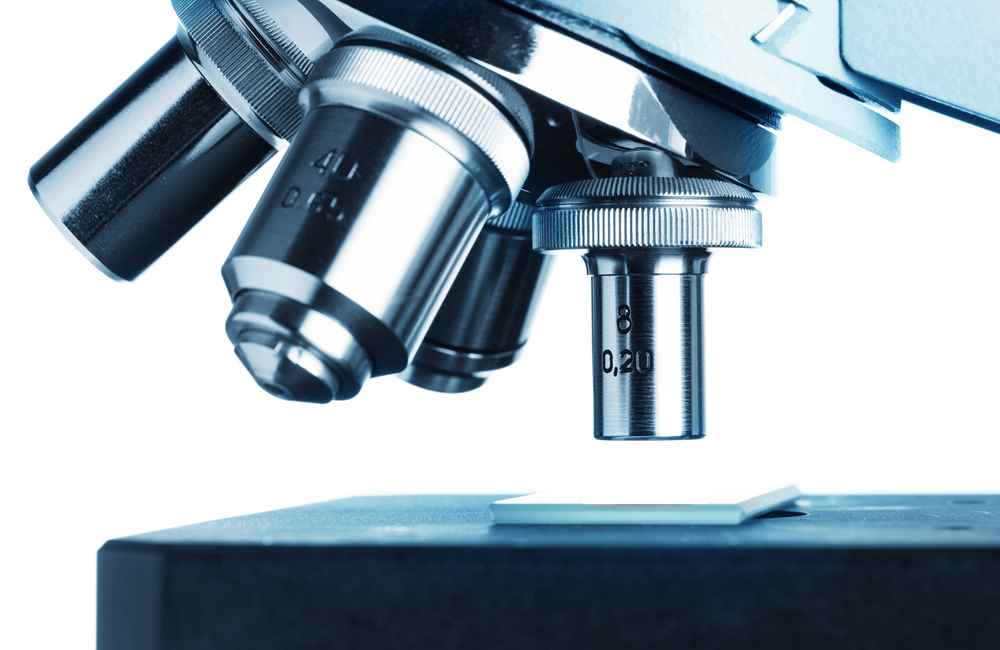
Aside from HIV, gonorrhoea is the sexually transmitted infection that attracts the keenest attention, with 87 million infections occurring worldwide every year. In Europe cases have more than tripled since 2008, with gay and bisexual men accounting for 25 to 30% of cases, about ten times the rate in heterosexuals.
Though usually only causing inflammation in the genitals, rectum or throat, gonorrhoea can cause testicular inflammation in men, pelvic inflammation in women, and infertility in both. It can generally be cured by antibiotics but, if left untreated, it can cause serious complications like arthritis and heart valve damage.
But it is gonorrhoea’s ability to develop resistance to successive generations of antibiotics that have caused most concern. One of the first bacteria to be treated with antibiotics, the Neisseria gonorrhoeae bacterium developed resistance to sulphonamides in the 1940s, to penicillin and tetracyclines in the 1980s, and to fluoroquinolones such as ciprofloxacin in the 1990s.
This left two commonly used classes that remained effective – the cephalosporins and the macrolides. But by 2011, about 10% of gonorrhoea cases had resistance to the most commonly used macrolide (azithromycin) and resistance also seemed to be rising to the most commonly used cephalosporin (cefixime).
Gonorrhoea guidelines
This was a dangerous situation, and concern that both inadequate testing and substandard treatment were in danger of leading to untreatable gonorrhoea prompted both the Centers for Disease Control and Prevention in the US and the International Union against Sexually Transmitted Infections (IUSTI) for Europe to revise their gonorrhoea guidelines.
Both recommended a 500mg injection of ceftriaxone (the one cephalosporin that gonorrhoea rarely develops resistance to) plus a single 2000mg oral dose of azithromycin.
Since then, there have been some worrying and well-publicised cases of further gonorrhoea resistance. In the UK, the first cases of gonorrhoea with resistance high-level enough to mean that 1000g of azithromycin would not work were reported in 2015. From 2016, gonorrhoea resistant even to ceftriaxone was reported in both Asia and Europe, with cases reported from Japan, China, Singapore, Canada, Denmark, France, Ireland – and the UK, with cases of resistance to both drugs reported in 2016 and two further cases in 2019. However these cases remain very rare, with most originating in Asia.
This month, IUSTI’s European Collaborative Clinical Group (ECCG) have published a survey to monitor the adherence of European clinics to the 2012 guidelines in the International Journal of STD and AIDS. So are the 2012 guidelines being followed? Has there been an increase or decrease in adherence to their recommendations? And do they need updating?
The audit surveyed a selection of STI clinics/physicians across the whole 53-country World Health Organization European area. It received 78 replies from 23 countries. The largest number of responses was 12 from the UK, with a good response also coming from Scandinavian countries. There were responses from several eastern European countries, including Russia, Georgia, Lithuania and Ukraine. There were notable gaps in response, with none from France, Germany or most Balkan countries apart from Slovenia and Macedonia.
The 2012 guidelines made a number of auditable recommendations on testing, treatment and follow-up for gonorrhoea.
The largest number were on testing. The IUSTI guidelines explain that there are three ways of testing for gonorrhoea:
- Microscopy (looking directly for bacteria in a sample) works well for urethral gonorrhoea in symptomatic men but often fails to detect asymptomatic infections and rectal and throat ones.
- Culture (growing the bacteria on a lab dish) is the only way of performing a resistance test but takes time and is not as sensitive in most cases as nucleic acid testing.
- Nucleic acid testing (NAAT), which detects lengths of the gonococcal genome, is generally more sensitive than the other two measures, except on urine samples in women, but different clinics use many different assays and sometimes, for cost reasons, devise their own unvalidated ones.
IUSTI recommend NAAT, with a second NAAT conducted on a different length of gonococcal DNA to confirm infection, as the “gold standard”. Failing that, they recommend using one of the other methods followed by NAAT as confirmation.
The audit also asked whether clinics conduct “three site testing” (genital, rectal and throat tests) in symptomatic and asymptomatic gay and bisexual men. The 2011 European MSM Internet Survey had found that anal swabs for gonorrhoea were not being offered in the majority of European countries, implying that gonorrhoea was being seriously under-diagnosed in gay men. Three-site testing is also important because a significant amount of gonorrhoea is spread orally, especially in gay men, and gonorrhoea in the pharynx (throat) can be hard to treat.
On treatment, the main auditable recommendation was whether the 500/1000mg ceftriaxone/azithromycin regimen was being used, and if not why not.
Results: testing
In some respects gonorrhoea testing has slipped backwards since the previous audit in 2012.
For instance, though all clinics who replied had access to at least one diagnostic method, 9% lacked the facilities to grow bacterial cultures, and this was worse than in 2012, when only 5% lacked culture facilities.
"Poland, Turkey, Azerbaijan and Armenia lacked any access to resistance testing."
More seriously, given the rise in multi-drug resistant and extensively drug resistant (MDR and XDR) gonorrhoea, there was a decrease in the proportion of clinics that could do drug susceptibility (resistance) testing on gonorrhoea, from 86% to 82%. Poland, Turkey, Azerbaijan and Armenia lacked any access to resistance testing.
The authors comment that “It is essential to significantly increase the access to… anti-microbial resistance testing in the era of MDR and XDR gonococcal strains spreading.”
Poland and Armenia also lacked access to nucleic acid testing and Armenia to culture facilities, implying only microscopy for testing.
Partly good news was a general increase in nucleic acid testing, from 81% of clinics performing it to 88%. However, the authors note that a wide variety of different genetic sequencing assays were being used, including clinics using their own unvalidated home-grown assays. A number of the tests used may not be sensitive enough, with only 61% of gonorrhoea diagnosed by other means positively reacting to a confirmatory nucleic acid test. Conversely, some clinics were using nucleic acid testing as a first-line test with a culture as a confirmatory test; yet cultures also often produce false negatives.
Only 23% of clinics said they were performing a second confirmatory nucleic acid test detecting a different target sequence of the Neisseria gonorrhoeae genome.
There has, however, been a considerable improvement in “three-site” testing in gay and bisexual men. In 2012, 65% of routine testing in asymptomatic gay men and 49% of testing in symptomatic gay men with positive genital results was performed on genital, rectal and pharyngeal samples. By 2019, 82% of clinics performed three-site testing on asymptomatic and symptomatic gay men alike.
The authors of the 2019 survey say that three-site testing should be extended to other populations. “Rectal and pharyngeal gonorrhoea can be exceedingly common and not exclusively limited to men who have sex with men,” they comment. “Pharyngeal gonorrhoea is also substantially harder to eradicate compared to urogenital gonorrhoea.”
Results: treatment
Sixty-nine per cent of clinics responding treated gonorrhoea with 500mg injectable ceftriaxone and 62% combined this with oral azithromycin, either 1000mg (28%), 1500mg (3%) or the recommended 2000mg (31%).
So less than a third were using the recommended European regimen. Worse, 6% used 500mg ceftriaxone monotherapy, and 4.5% used 250mg ceftriaxone with 1000mg azithromycin. The authors comment that 250mg ceftriaxone may not be potent enough to treat gonorrhoea and so risks the development of resistance to both drugs used.
Three per cent each of clinics used outdated regimens based on cefixime (to which significant resistance had developed by 2012) and ciprofloxacin (significant resistance by 2000).
However, a significant proportion (20.5%) of the clinics were in fact using twice as much ceftriaxone (1000mg). Some of these, instead of adhering to the European guidelines were in fact adhering to a new set of guidelines, issued by the British Association for Sexual Health and HIV (BASHH) in 2019 just as this survey was being conducted.
The British guidelines took a radical step. They proposed doubling the dose of ceftriaxone to 1000mg and eliminating the azithromycin, thus using it as monotherapy. Their rationale is this:
- Ceftriaxone resistance in fact remains very rare. The drug has a long half-life which means it can see off most gonorrhoea infections before drug levels fall to within the resistance danger zone, and the vast majority of infections with reduced ceftriaxone susceptibility can still be cured with an 1000mg dose;
- In most cases of solo gonorrhoea (without chlamydia co-infection), the azithromycin is adding little. Given that nearly 10% of gonorrhoea now shows azithromycin resistance, using it unnecessarily risks creating more resistance for little added benefit;
- This is particularly the case as a large number of clinics are still using 1000mg of azithromycin, which is insufficient to clear gonorrhoea by itself;
- Even 2000mg azithromycin does not work against high-level resistance and risks gastrointestinal side effects;
- If clinics can perform a gonorrhoea resistance test before treatment, older regimens then become possible; for instance, most gonorrhoea is still susceptible to ciprofloxacin;
- Azithromycin taken with alternatives to ceftriaxone should be reserved for cases where people cannot tolerate injections, or where there is confirmed or suspected chlamydia co-infection, as azithromycin is still the indicated treatment for chlamydia.
Over 10% of clinics were using ceftriaxone monotherapy – most of them, the authors speculate, UK ones. Another 4.5% were combining 1000mg of ceftriaxone with different doses of azithromycin. And 6% were combining 1000mg ceftriaxone with doxycycline, an antibiotic which is no longer a mainstay of gonorrhoea treatment.
Reverting to monotherapy may look strange to clinicians and advocates more used to the treatment of HIV, TB or malaria, where combination therapy is the only way to avoid resistance and devise lastingly potent regimens.
However, as the authors of the audit comment, “In a country with a well-developed sexual health system, no gonococcal ceftriaxone resistance according to recent, comprehensive and quality-assured anti-microbial resistance surveillance, and most patients returning for confirmation of cure, treatment with 1000mg of ceftriaxone without 2000mg of azithromycin can be acceptable, when concomitant chlamydia infection has been excluded.”
But where resistance testing is not available, adding in azithromycin is still probably the best bet (as 4.5% of clinics did who used 1000mg ceftriaxone). In other words, as long as either the European or the UK guidelines are adhered to strictly in the countries best suited for them, the health emergency that would be created by widespread XDR-gonorrhoea can hopefully be forestalled.
Unemo M et al. Adherence to the 2012 European gonorrhoea guideline in the WHO European Region according to the 2018-19 International Union against Sexually Transmitted Infections European Collaborative Clinical Group gonorrhoea survey. International Journal of STD and AIDS 31:69-76, 2020.
http://doi.org/10.1177/0956462419879278
Bignell C et al. 2012 European Guideline on the Diagnosis and Treatment of Gonorrhoea. International Journal of STD and AIDS 24: 85–92, 2013.
https://doi.org/10.1177/0956462412472837
Fifer H et al. 2018 UK national guideline for the management of infection with Neisseria gonorrhoeae. International Journal of STD and AIDS 31:69-76, 2020.

